Buying an older home? Find out if it has lead paint.
- Author:by Boris Dzhingarov

There are many things that you must worry about when buying a home, but you might not expect paint to be one of them. If you are buying an older home, however, you will need to determine whether any of the paint in the house contains lead.
Lead is incredibly dangerous, so you’ll need to make sure your home is lead-free, especially if you have small kids. In this article, we are going to look at how you can check for lead paint to ensure that the home you want to buy is safe.
Table of Contents:
1. Which homes have lead paint?
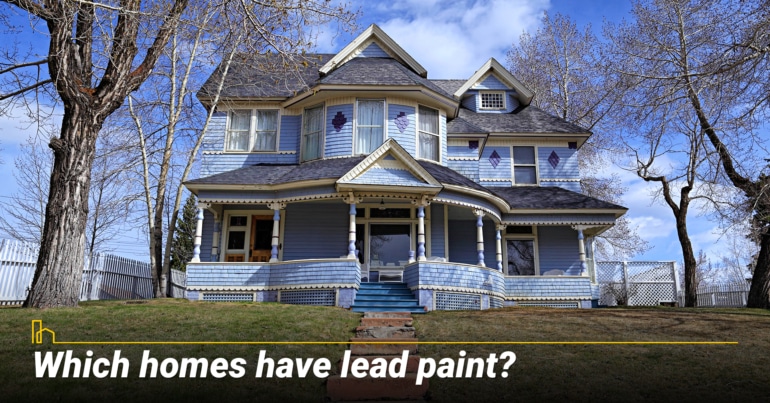
The federal government banned the use of lead paint in 1978, but it is reasonable to assume that any home built prior to the ban is likely to have some lead paint in it. Additionally, since many contractors continued to use previously purchased paint after the ban, some houses built up to around 1980 may have lead paint in them, too. The likelihood increases with the age of the building: the government estimates that over 85% of homes built before 1950 have some lead paint.
The 10 Paint Ideas for Open Living Room and Kitchen
If you’ve been spending more time than usual in your own home lately—and who hasn’t? — you may be itching to refresh your living space with a new coat of paint. Here are 10 paint trends that will help you bring your living room out of the past and into a satisfying future…
2. Where might lead paint be found?
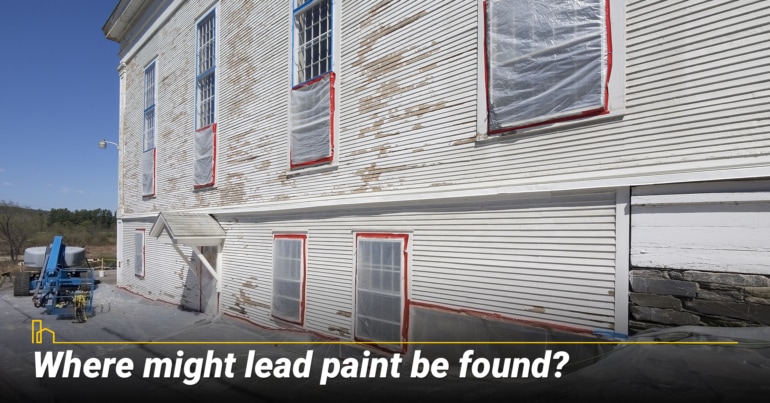
Any surface that has been painted could potentially be a source of lead. Lead paint was typically used on doors, windowsills, stairs, banisters, railings and porches.
Since it is common to paint over existing layers of paint, you may find that older lead paint is hidden beneath newer paint.
If lead paint is in good condition, it doesn’t normally cause a problem. In an older house, though, this may not be the case. Wooden surfaces are often subject to wear and tear. They get bashed by furniture, scratched by pets, and worn down by endless hands and sticky fingers.
The Beginner’s Guide on How to Buy a House
In this article, we’ll discuss those key steps to confidently buying your first home. We’ll also look at several professionals who can help guide you on the journey, so all the details are handled correctly and professionally. Let’s get started on your next adventure…
3. What are the signs of lead paint?
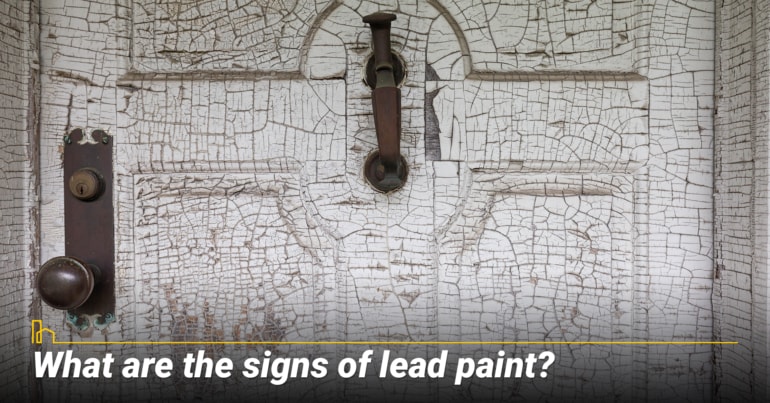
Once you know what you are looking for, it becomes very easy to identify lead paint. Lead paint forms scales when it deteriorates. Finding cracks on your walls that form scales might be a sign that your home has lead in it. If you find these paint scales in one part of the home, you will need to look at the basement and other areas of the home to determine the extent of the problem.
Lead-based paint can also appear chalky with age, although it may not be obvious if there are several layers of new paint on top of the older paint.
Pay close attention to paint in older parts of the property, particularly in rooms that haven’t been modernized or renovated. This includes basements and attics as well as inside pantries and closets and behind appliances.
If in doubt, ask an expert to take a look — or buy a testing kit.
Recommended for you
4. Should you use a testing kit?

If you suspect that the home has lead paint in it, you can try to use a testing kit to confirm. These tests are inexpensive, but they have a serious limitation: they only test the first layer of paint. If the house has been repainted once (or several times), you might not find the lead. In this case, it is important to use a more reliable approach: calling an inspector.
5. When do you need a certified inspector?
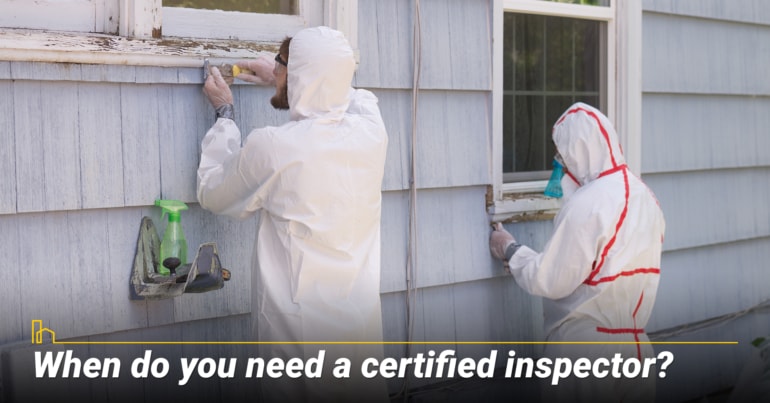
If you want to ensure that the home contains no lead paint and have it certified as lead-free, you will need a professional test. When you suspect that the older home you are looking at has lead paint in it, you need to call an inspector.
Inspectors who have the right certification — through completing EPA-approved courses, such as the EPA Lead Certification courses from Zota Pro — will check the home for lead and ascertain the level of lead in the house. They will then use an x-ray and other tools to look through the top layers of paint and check for lead deeper down.
They will tell you where there is lead in the house, then make recommendations as to whether the levels are safe and whether you can do work on the house in the future. If the house contains a higher-than-normal level of lead, you will need to call a contractor certified in homes with lead paint if you would like to do any renovations.
5 Best Actions to Increase Your Credit Score in 60 Days
There are other factors that are looked at when trying to qualify for a home, but credit scores is the top factor. This article will discuss credit scores, how they work and 5 of the main actions that you can take to improve your credit score as quickly as possible…
6. Why is lead paint dangerous?
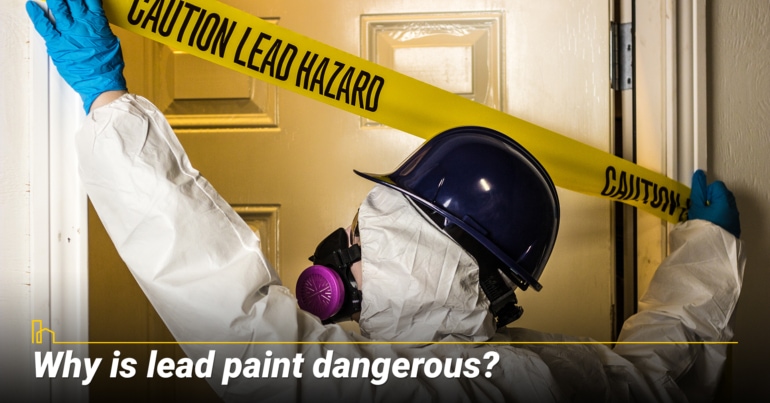
Lead paint is not dangerous when it’s in perfect condition, but the natural aging process of a property, as well as normal wear and tear, means that this is not always the case. Lead is toxic when it is ingested. If lead paint is chipped or flaking off, or a painted surface is sanded down or sawed into, dust and flakes may end up being ingested by children or pets. Adults are also at risk from dust containing lead particles.
Symptoms of lead poisoning include:
- a) Headaches
- b) Intestinal issues
- c) Joint and muscle pain
- d) Seizures
- e) Irritability
- f) Memory problems
- g) Mental and physical developmental problems
- h) Fertility issues
- i) Low birthweight and delayed growth in babies exposed in-utero
Babies and young children are more at risk of lead paint poisoning because they are more inclined to chew painted surfaces and pick up and eat paint flakes.
Exposure to lead can cause many serious health problems, and children under the age of six are particularly at risk. Exposure to lead-based paint and contaminated dust is the most common cause of lead poisoning in children, and older homes are often to blame.
When renovating an older home, it is important to understand the risks involved, as even with careful renovation in the past, there may still be remnants of lead paint present.
Because lead is released into the atmosphere when the surface of the paint is damaged, it’s critical that you pay close attention to the dangers of contaminated dust and lead paint flakes. If you decide to sand down old doors or windows, for example, protect yourself by wearing a face mask and using an industrial vacuum cleaner with a filter to remove contaminated dust.
In conclusion, if you are buying a home that was built before 1980, you should have it tested for lead paint. Lead can be incredibly dangerous, and you need to ensure the home is safe for both you and your kids.
Recommended for you


































